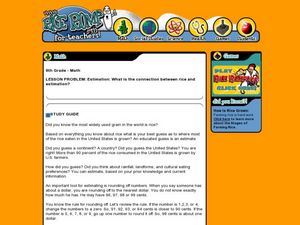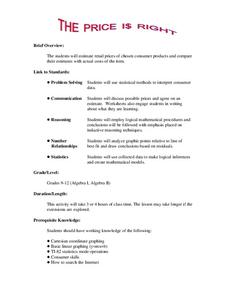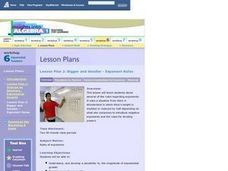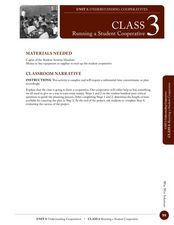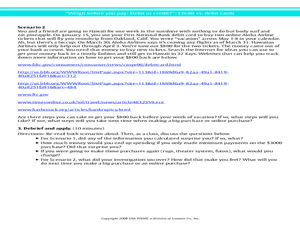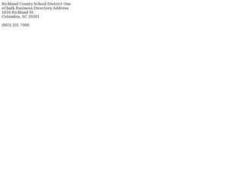Curated OER
What is the connection between rice and estimation?
Sixth graders investigate estimating. In this estimating instructional activity, 6th graders estimate how much rice is eaten around the world. Students estimate the percentages of rice eaten by other countries. Students compare rice...
Curated OER
Community Action
Fifth graders decide how one uses resources within a particular bioregion. For this decision making lesson, 5th graders consider the biodiversity and complexity of the ecosystem. Students select a resource (water, paper,...
Japan Society
Changing Times, Changing Styles: New Japanese Literary Styles of the Late Nineteenth Century
Focusing on Doppo's "Unforgettable People" and late nineteenth century Japanese literature, this resource also leads to discussions of form being dictated by content. Explore the development of new literary styles first-hand by...
Baylor College
Do Plants Need Light?
Turn your classroom into a greenhouse with a lesson on plant growth. First, investigate the different parts of seeds, identifying the seed coat, cotyledon, and embryo. Then plant the seeds and watch them grow! Measure the new plants...
Curated OER
Closer To the Ground Lesson 2: Providing a Helping Hand
Students examine how businesses and corporations contribute or sponsor activities for the common good. They read annual reports of major corporations to determine how they contribute to focused activities for the common good.
Curated OER
Money & Work
Twelfth graders explain basic information concerning financial investments. They identify consumer rights and responsibilities and effective practices for purchasing consumer goods, services, housing and insurance. They list steps in...
Curated OER
Transforming Food Energy: A Balancing Act
Students explain their role as consumers. They use a purchased calorimeter or make their own simple calorimeter to measure the energy content in selected foods. This interesting lesson really gets students thinking about what they eat.
Curated OER
Payment Parliament
Students investigate how the economy works by role playing in their class. In this money management lesson, students read parts from a script for use in a role playing lesson simulating the Federal Reserve and their payment...
Curated OER
Food Chains and Endangered Animals
Students investigate how all links in the food chain are related. In this animal habitat lesson, students hypothesize about what would happen in the food chain if an endangered species were to become extinct. This lesson also includes an...
Curated OER
Graphs
Eighth graders analyze graphs on a worksheet and in newspapers and magazines. In this graphs lesson plan, 8th graders also record their thoughts in a journal.
Curated OER
The Price Is Right
Students create a list of products with estimated prices. In this algebra instructional activity, students learn to write equations using variables. They match their created list with that of actual products and compare their...
Curated OER
PAY CREDIT WHEN CREDIT IS DUE
Students learn about credit cards and scores and how to and not to use them. In this financial concept lesson, students are given hypothetical scenarios where they are able to apply learning's to given situations as they figure rates,...
Curated OER
Optimization For Breakfast
Students identify he proportion of a cereal box. In this algebra lesson, students define the relationship between patterns, functions and relations. They model their understanding using the cereal box.
Curated OER
The Good Life
Students explore the world of credit. In this finance lesson, students examine the use of credit and discuss financial fitness. Students create a brochure or poster to educate others on the types of credit and how to stay financially fit.
Curated OER
Made Round To Go Round
For this lesson students investigate what it would cost to furnish one room of their choice by shopping on the Internet. Both Australian and American dollars are to be given for each item to demonstrate the difference between two...
Curated OER
Bigger and Smaller - Exponent Rules
Students study rules regarding exponents. It uses a situation from Alice in Wonderland in which Alice's height is doubled or reduced by half depending on what she consumes to introduce negative exponents and the rules for dividing powers.
Curated OER
Running a Student Cooperative
Students form a classroom cooperative. In this service learning instructional activity, students explore how to form and run a cooperative and decide as a class how to implement their cooperative plan. Students use funds raised from the...
Curated OER
Weigh Before You Pay: Debit or Credit?
Learners explore the concept of debit and credit cards. For this debit and credit card lesson, students read an article about debit and credit cards. Learners discuss differences between the two forms of payment. Students calculate the...
Curated OER
The Snack Bar
Sixth graders complete a purchase order. In this ratios and patterns lesson, 6th graders work in groups to complete a purchase order for a grand opening of the school snack bar. Students use rations to figure out the need and quantity...
Curated OER
Free Enterprise--Product Cost
Pupils apply basic math skills in computing a product cost.
Curated OER
Scientific Graphs
Students organize data collected from their experiments using graphs. In this statistics and biology lesson, students organize their scientific data from an article into readable graphs. They define the usefulness of their graph and...
Curated OER
99.86% - Measuring Our Sun's Mass
Students determine just how large the sun is. In this solar system lesson plan, students follow the prescribed steps to draw a box that represents the size of the sun and its mass compared to the entire solar system.
Curated OER
Banking on the Future
Students solve problems involving interest. In this investing lesson, students investigate the pros and cons of investing in a bank account and stocks. They differentiate between aggressive and conservative investments.
Curated OER
The Fat and the Lean
Students collect data on calorie intake. For this algebra lesson, students use the collection of data to make better eating decisions. They investigate the nutritional value in food using a graph and draw conclusion from their findings.
